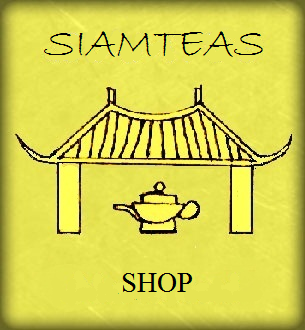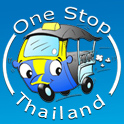 Tea Flavor Wheel – System for standardized tea taste description
Tea Flavor Wheel – System for standardized tea taste description
Been there, done that? You tell a friend or acquaintance of a new tea you have discovered or post a photo of the same on Facebook or in an online forum, and inevitably comes the question: ‘How does it taste then’?. Coming up with an adequate answer to this question can be a much harder task than one would think. Of course, you know how your tea tastes, you’ve been drinking it. But describing your taste experience and doing so in a way that will enable your conversation partner / reader to actually develop an idea of your tea’s taste that is identical to yours suddenly proves to be an art of its own.
 Thai Oriental Beauty Oolong Tea: intensive ‘floral’ taste
Thai Oriental Beauty Oolong Tea: intensive ‘floral’ taste
In order to produce a shared understanding, when describing the taste of a tea, we will usually use attributes or references that are widely known and common ground regarding their content and attached taste connotations. So, the taste of a particularly fresh and fruity green tea may be described as ‘citrus’, while in reverse we will most probably never say of a lemon that is tastes like a Long Jing green tea. Those, who are writing about tea, whether as a hobby or in a professional context, starting from the private tea blogger and the promotional review of a tea on a subject-specific web platform to the commercial description of a tea in a brochure or online tea shop, are familiar with the challenge: the description must fulfill two basic requirements. Once, it will have to describe the tea in a way that produces a positive perception with the reader, making it appear as alluring and inspire one’s curiosity, and second it needs to be appropriate, so the reader will be able to relate to it when trying that tea themselves.
 Japanese Kabusecha Green Tea: ‘sweet, fresh and grassy’
Japanese Kabusecha Green Tea: ‘sweet, fresh and grassy’
The deeper you dig into this task, to more obvious the obvious will become, namely that there cannot be such thing as an objective description of the taste of a tea in the first place, as taste – per definition – will always be a question of taste and therefore highly individual and subjective. Nevertheless, there is also a certain consent among individuals regarding the perception and allocation at least of the most common flavor attributes (e.g. sweet, bitter, sour…), especially if a tea will display them in a bold fashion and/or in the foreground. As an example, most people in the world, upon trying gummy bears, will come to the consentient result that these taste sweet. As for the capturing and description of the taste of a tea, however, such consensus will be much harder to achieve, as the taste of pure teas mostly comprises of a combination of flavors that are present both to different degrees and on different levels of perception in the overall taste pattern. In addition, they often will be ‘subtle’, i.e. they do not impose themselves on the savorer at all, but require a certain sensitivity instead, along with a certain degree of attention. A clear consensus in the perception of the components/flavors/notes involved in the taste a tea and their weighting and positioning in the taste pattern therefore actually only exists within the group of tea lovers, whose members are all trained in exercising that sensitivity to different degrees and will usually pay a certain level of attention to their tea’s preparation and savoring. For non-trained outsiders to the world of tea, though, such perceptions and descriptions of a tea’s flavor/s will often be hard to understand, if at all, this ultimately causing a certain barrier to the initial access to the core of pure tea enjoyment.
 Japanese Houjicha green tea: ‘nutty and roasted’
Japanese Houjicha green tea: ‘nutty and roasted’
While therefore each description of the taste of a pure tea will meet real perceptional consent only within a ‘community’ of people who fancy such teas, the variety of attributes and references will cause an issue of unshared ground even within this group, as there might be no commonly shared consensus about the perception of such terms’ contents, or where terms aren’t defined clear enough to enable such consent in the first place. As an example, let’s look at the attribute ‘floral’, which is used very frequently in tea flavor descriptions: how exactly do flowers taste, and which flower is meant in each particular case? As part of an effort being made to create a certain homogeneity in the use of terms for flavor notes to increase the consent regarding the perception and description of the taste of pure teas, we most recently see so-called “Tea Flavor Wheels” being developed and published with growing frequency, where the individual flavor categories relevant for pure tea are identified, systematically arranged and further sub-differentiated. Above in this article is an example for such circular diagram categorization system of tea flavor notes. You can see more and even more differentiated such diagrams (which might be proprietary, so I don’t want to post them here due to concerns of copyright violation) by clicking on the following links:
- Temple-Mountain-Tea Tea Flavor Wheel
- Teahouse Kuan Yin Tea Flavor Wheel
- Australian Tea Master Association Tea Flavor Wheel
- Twinings Tea Flavor Wheel
While this approach can certainly contribute to a useful and reasonable standardization of a taste-descriptive terminology for tea, it doesn’t come without catches. One prerequisite for the successful standardization of the taste-descriptive terminology is the development and establishment of a standard that is widely recognized and used both across the industry and tea consumers. This standard could absolutely be flexible within reasonable boundaries. However, where deviations between individual categorization systems will become significant, their contribution to standardization will naturally be diminished, down to the point, where – as standards – they will become useless. Another catch, at least for me, is always the potential taste-sensory non-conceivability of individual terms’ and term fields’ taste connotation: an example for this would be the flavor category ‘wood’, with its diverse sub-types such as sandalwood, ceder wood, pine wood, etc. My problem here ultimately arises from the fact that I don’t really know how these woods taste, or how how their flavors would differ from each other, for that matter. In fact, the only idea that I could possibly have of such flavors (if we for once exclude the option of eating the responsive woods for breakfast, lunch and dinner in a comparative study) is based solely on my olfactory perception of such materials and not on their actual taste. It’s pretty much the same thing with the range of flowers and various other terms that are typically used in tea flavor wheels such as the one shown above.
 Japanese Sencha Green Tea: ‘grass and hay notes’
Japanese Sencha Green Tea: ‘grass and hay notes’
On the positive side, apart from the benefits provided by the standardization of vocabulary and connotations through a commonly available and used terminology system, I want to highlight the opportunities arising from this for tea bloggers, tea shop operators and other authors of tea-related texts. So, when writing about tea, I personally really embrace the inspiration arising from the rich pool of attributes and references provided by such tea flavor categorization systems. Still, I would definitely refuse to consider the instruments given through such system of descriptive attributes as either mandatory or even exclusive for my description of tea flavors. For its own sake, individual creativity won’t allow for such limitation, without a totalitarian anti-art effect inevitably arising from such mandatory standardization. And then, irrespective of the orientation at a terminology that I could have possibly have assumed an existing consensus for, it still happens time and again that a customer, after trying one of our teas and reading my description of this tea’s taste in Siam Tea Shop, will provide me with a feedback expressively lauding my description for its accurateness and stating how well they could relate to it. Goal achieved!









